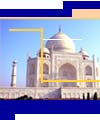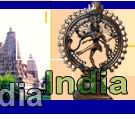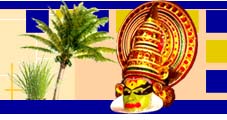| Encyclopedia of Tours and Travel to India, featuring information on Fairs & Festivals, Wildlife, Excursion, Adventure, Weather and Major Cities of every state/province of India. |
 |
 |
 |
 |
 |
 |
|
|||||||||
|
Languages
In different parts of India, different languages are spoken. Most of the languages of India belong to two families, Aryan and Dravidian. Languages spoken in the five states of South India belong to the Dravidian family and most of the languages spoken in the North India are of Aryan family. The general script of the Aryan languages is different from the general script of Dravidian languages. The Indians also distinguish between the general north Indian accent and general south Indian accent. Along with these two main language families, there are other languages from the Sini - Mongoloid family spoken in East India. The languages spoken in present India, evolved in different phases of Indian history. In the earlier stage of Indian history other languages were spoken. The holy books of different religions that developed in ancient India are written in different languages. The holy books of Hinduism were written Sanskrit. The holy books of Buddhism were written in Pali. The holy books of Jainism were written in Ardhamaghadi. These three languages aren't spoken fluently in India today, but Sanskrit is recognized as one of the official languages of India. The modern Aryan languages are considered to have evolved from Sanskrit. The evolvement of south Indian languages isn't clear. Many believe that before the arrival of the Aryans, Dravidian languages were spoken over all India. Some of the tribes of north India speak (or spoke in the near past) in dialects similar to Dravidian languages. Among the present Dravidian languages of south India, Tamil language had exerted its greatest influence on other Dravidian languages.
The Indian constitution recognizes, for now, 18 official Indian languages. But, almost each of these 18 languages, include different dialects or variations of that language. Besides these 18 languages, there are other languages which are recognized by the central government, but not as official languages. There are other languages which aren't recognized by the central government. Some of the present India's states boundaries created were based on the boundaries of the main Indian languages as recognized by the Indian constitution. The process of creating Indian states began after India's independence in 1947. During the British rule of India, there were two types of British India states, princely states and provinces. With India's independence, provinces like Bombay and Bengal became Indian states and the small princely states adjoining the big provinces were added to the provinces. In some cases some small adjoining princely states were joined together to make a new state like Rajasthan. Big princely states like Hyderabad, Mysore and others were also made states. But many local leaders demanded states for their culture and identity. The main demand was to create states based on language boundaries. This process of creating states based on languages began in 1953 and even today there are demands for new states for different language speakers. States whose boundaries are based on languages are Kerala for Malyalam speakers. Tamil Nadu for Tamil speakers. Karnataka for Kanadda speakers.Andra Pradesh for Telugu speakers. Maharashtra for Marathi speakers.Orissa for Oriya speakers. West Bengal for Bengali speakers. Gujarat for Gujarati speakers. Punjab for Punjabi speakers. Assam for Assami speakers. Some of these states like Bengal and Orissa were provinces during British rule. Though many states were created based on language boundaries, there are other states which weren't created based on language boundaries and there are many language speaker who don't have their own state. To name a few other languages spoken in India, one can name Dogri, Ladacki and Kashmiri which are spoken in different parts of Jammu and Kashmir state. In Sikkim, different languages are spoken. The main language there is Nepali. In Manipur the main language is Manipuri. In Madya Pradesh, Uttar Pradesh, Rajasthan, Haryana, Himachal Pradesh the main language is Hindi, which is also become the national language of India. Some languages of India aren't specific to a region of India, like Sindhi whose speakers came to India from Sindh (in present day Pakistan), but are scattered all over India. Urdu is spoken by many Muslims all over India. The different tribes of India (some of them only a few hundreds) also have their own languages.
As stated earlier most of the main Indian languages have different dialects and variations, sometimes very different from each other. Hindi has more than ten variations. Hindi spoken in Rajasthan is different from Hindi spoken in Bihar or Hindi of Himachal Pradesh. Sometimes the different variations of a language are considered as separate language with their own literature. One of Hindi dialects spoken in East India is Maithali. Many Maithali speakers regard their language as a different language from Hindi. Also Rajasthani from Rajasthan is considered sometimes as a different language and not as Hindi. But, actually Rajasthani also isn't one language but different tribal languages spoken by the people of Rajasthan and they all call their languages after the name of their region. Another language named after its region is Konkani spoken in Goa and named as such because of the Konkan coast. To the North of Goa in the Konkan coast of Maharashtra there is another 'Konkani' language which is considered a dialect derived from the Marathi language and is different from Goa's Konkani language. The Indian constitution uses the term 'mother tongue' instead of language or dialect. Officially the central government recognizes 18 languages, but each language includes in it many mother tongues. The Indian census records over 200 different mother tongues. Despite the different languages and dialects, most of the official languages speakers have developed a standard of speaking language which has become the accepted style of speaking for that language. Sometimes, like in the case of Hindi this language is completely different from some of its dialects.
|
|||||||||